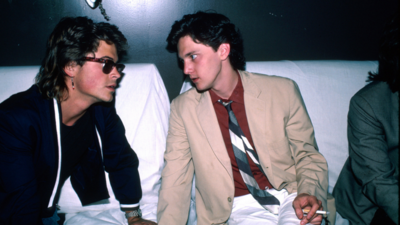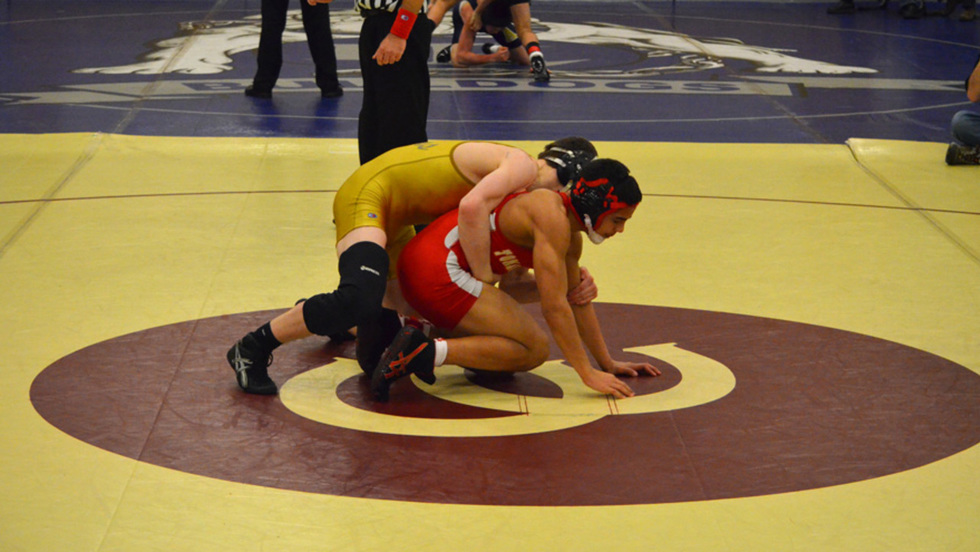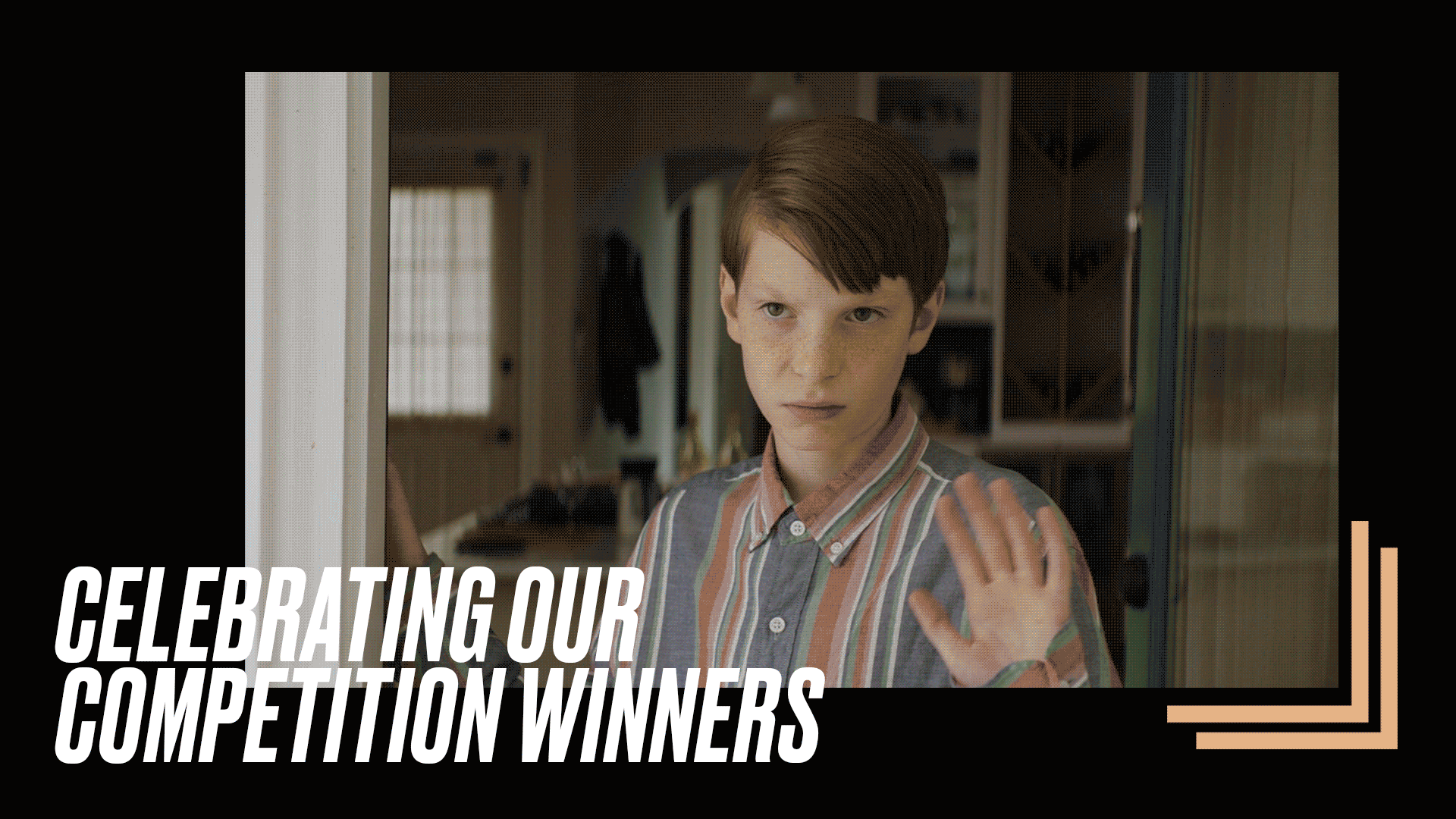
BY KRISTIN MC CRACKEN |
Pinning and Winning
Former high school wrestler Chris Pratt (Parks and Recreation) narrates On the Mat, Fredric Golding's documentary about one team's journey to the State championships. Win, win!

Tribeca: Tell us about On the Mat. How do you describe the movie in your own words?
Fredric Golding: On the surface, On the Mat could be perceived as a simple sports documentary, but I think overall it’s about the heart and soul of kids in America today, as manifested by the wrestlers at Lake Stevens High School in Washington State.
As a documentary filmmaker, what I do best is character studies, and On the Mat is an exploration of five kids caught in the throes of being adolescents in America, and about them coming to maturity. What I was trying to capture was who they are as people, as well as who they are as athletes, with a strong narrative told through the lens of a wrestling season.
Tribeca: What inspired you to tell this story? Do you have a connection to Lake Stevens, wrestling, etc.? If not, how did you get involved?
Fredric Golding: I have been directing documentaries for 25 years. Chris Pratt, who is an actor [Parks and Recreation, Moneyball] and one of the producers, came to Mike Tollin, a very well-known producer, with a treatment about wrestling at Lake Stevens. Chris was a wrestler there as a kid, and he is very close with the coach, Brett Barnes. So with Chris, we had an immediate “in” with both the school and, as importantly, the district. Mike brought the project to me, I met Chris, and then I went to Lake Stevens and spent the whole season—about six months—with the team.
Tribeca: How did you connect with the current team, the coaches, etc.?
Fredric Golding: As with most doc projects, you start with your main character. While I knew my main characters would also be the kids, I think the backbone of the whole project was with the coach. Brett Barnes is the leader of the team—not only as the coach, but almost as their spiritual leader. We became friendly very quickly, and I started shooting with the kids.
To get a serious documentary these days, you have to get over the phenomenon of reality television. In order to get natural reactions, you have to evolve into a situation where the camera becomes invisible. I would say it took about three weeks to a month to get natural reactions from the kids when the camera was around. At first it was new, and it was something fun, but eventually they determined—smartly—that I wasn’t going to go away. And that’s when their reactions became natural.

Tribeca: How did particular characters emerge—did you know which ones you would focus on from the beginning?
Fredric Golding: I knew from the beginning that Ryan Rodrigo was the captain of the team, and clearly, in any type of sports doc project, you want to include the captain, since he’s the appointed leader of the kids. You also go to the superstar—you use all the stereotypes you have in storytelling—and in this case, the superstar was this kid Steven Walkley. He was dealing with academic problems, so he was not eligible to wrestle for the first half of the season, which became a story in and of itself. I think Coach Barnes knew he had no chance of winning a State title without Steven, so there was all this support to get him academically eligible—a tutor, etc.
And then we looked at other kids who on the one hand were great wrestlers, but on the other, they were also interesting characters, which meant they could talk comfortably on camera. One of the kids—sophomore Eric Soler—injurned his knee in a tournament on the East Coast. He ended up wrestling the rest of the season—miraculously—with a torn ACL for the rest of the year; it was a really remarkable, true test of mental toughness and character that he was even able to get back on the mat.
Tribeca: Wasn’t that dangerous?
Fredric Golding: There was a possibility that he could have injured himself even more, but he’s been wrestling all his life, and he was determined to lead his team into the State finals as a sophomore. At 16, he decided to put on a knee brace and go out and wrestle.
And then Jesse Peterson is a really interesting kid—he’s dyslexic, and he has a younger, legally blind brother. His parents were divorced, and he was living on a cot in his uncle’s house, where his mother was also staying. In a tournament, another wrestler threw him on his head, and Jesse was knocked out for four and a half minutes; everyone thought he was dead. But he was okay.
Tribeca: When starting out, you obviously had no idea what was going to happen during the year. What's the craziest thing (or "lightning strikes" moment) that happened during production?
Fredric Golding: Ultimately, Ryan Rodrigo, the captain, whose sole goal in life at that point was to win a state tournament, faced his own personal demons in the State tournament. And without giving things away, the kid who really worked the least of all the kids ended up with a major, major victory...
With any documentary, the mantra is “hurry up and wait.” You just have to be patient with your story. Unlike a news producer, a doc filmmaker has to have a major degree of patience. I did. And I got lucky in that the story became something I could not have scripted. If I had scripted this, you would not have believed it.
Tribeca: As a producer, how involved was Chris Pratt?
Fredric Golding: Chris came up to Lake Stevens for a month, where he practiced with the heavyweight wrestler on the team, and he was at the regional finals and at the State finals. He’s a really great guy, and he’s really, really dedicated to wrestling—he really believes that wrestling made him who he is today.
Tribeca: On the Mat is screening in the TFF/ESPN Sports Film Festival. What do you think makes sports movies so compelling to audiences?
Fredric Golding: Sports films have a natural arc. By virtue of the game, there is winning and there is losing—providing a natural dramatic arc that an audience can follow. They also have a rooting interest in the outcome—whether it’s for the bad guy or the good guy. For me, the point is to draw out the characters in the game.

Tribeca: What's your advice for aspiring documentary filmmakers? Is there one particular thing you learned making On the Mat that was different from your other work?
Fredric Golding: In addition to being patient, you have to understand that a story is not something you are going to get in a day. The story has to be crafted—you have to wait for your characters to express how they feel and how they act. Stories don’t happen in a minute; they happen over the course of months. That’s what’s happened with most films I’ve done—just when you least expect something, it comes along, and that becomes your dramatic moment. You put them all together, and it makes a great story.
Tribeca: What are you most looking forward to at the Tribeca Film Festival?
Fredric Golding: I went to Lake Stevens, a very small community north of Seattle, with the intent of documenting a wrestling team. And then—like any documentary filmmaker—what you want are eyeballs; you want people to watch your film. With its New York audience, what Tribeca gives me is the ability to bring a small community to a large stage, and to see what the reactions are. The reactions are what I am looking forward to.
Tribeca: If you could have dinner with any filmmaker (alive or dead), who would it be?
Fredric Golding: Bob Fosse. Fosse, from a visual point of a view, and from a storytelling point of view, was ahead of his time. I think in a certain sense, he predated MTV with a lot of his techniques—in part, with All That Jazz. And with Lenny—that was an amazing character study that uses a lot of documentary techniques. He’s just a fascinating filmmaker.
Tribeca: What’s your favorite New York movie?
Fredric Golding: In New York Stories—which is made up of three short films—the segment called Life Lessons by Marty Scorsese, with Nick Nolte as a New York painter.
Tribeca: What would your biopic be called?
Fredric Golding: He Understood Character and What Makes People Tick.
Tribeca: And finally, what makes On the Mat a Tribeca must-see?
Fredric Golding: Unlike a lot of films that have a simple narrative arc with 2-3 people, On the Mat is an ensemble piece that has multiple story arcs that explore the human condition. Not only that, but On the Mat will leave audiences on the edge of their seats, rooting for Lake Stevens to win the State title. And it all comes down to the last frame of the film…
On the Mat is also screening in the Tribeca Online Film Festival. Watch and vote for it online after its debut on April 23.

Fredric Golding has worked extensively in the film and television business for the last 25 years. He was nominated for an Oscar for the doc Hank Aaron: Chasing the Dream. He directed Hardwood Dreams: Ten Years Later for Spike TV and created the paranormal series Dead Tenants for TLC.

